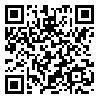BibTeX | RIS | EndNote | Medlars | ProCite | Reference Manager | RefWorks
Send citation to:
URL: http://irje.tums.ac.ir/article-1-5638-en.html
2- دانشیار مدیریت خدمات بهداشتی درمانی، مرکز تحقیقات انفورماتیک پزشکی، پژوهشکده آینده پژوهی در سلامت، دانشگاه علوم پزشکی کرمان، ایران
3- استادیار اقتصاد سلامت، مرکز تحقیقات عوامل اجتماعی موثر بر سلامت، پژوهشکده آینده پژوهشی در سلامت، دانشگاه علوم پزشکی کرمان، کرمان، ایران
4- استادیار اقتصاد سلامت، مرکز تحقیقات مدلسازی در سلامت، پژوهشکده آینده پژوهشی در سلامت، دانشگاه علوم پزشکی کرمان، کرمان، ایران ,
Background and Objectives: Productivity and efficiency are the most important and the most common mechanisms of evaluation and measurement of the performance of an enterprise including the Social Security Organization. In the past decades, performance evaluation of various economic sectors has been attractive to researchers in different disciplines. Thus, the aim of this study was to measure the efficiency of the direct treatment section of treatment management units of Social Security Organization by data envelopment analysis method.
Methods: This descriptive- analytic study was conducted to measure the efficiency of the direct treatment section of treatment management units of Social Security Organization through the data envelopment analysis (DEA) method in 2014. Data and relevant statistics were collected from the Statistical Center of Social Security Organization. The Deap2.1 software was used to calculate the efficiency and the EMS software was used to calculate the super efficiency. Then, the hypotheses of the research were studied using the Stata software.
Results: The average technical efficiency, managerial efficiency, and scale efficiency in 2014 was 0.924, 0.992, and 0.932, respectively. Twelve decision making units (DMUs) had the maximum technical efficiency (1), 16 DMUs had technical efficiency between 0.8 and 1, and 3 units had technical efficiency less than 0.8.
Conclusion: This study introduces a functional pattern to managers of Social Security Organization that enables them to have more accurate planning for the development and saving of resources.
Received: 2017/02/21 | Accepted: 2017/02/21 | Published: 2017/02/21
| Rights and permissions | |
 |
This work is licensed under a Creative Commons Attribution-NonCommercial 4.0 International License. |





